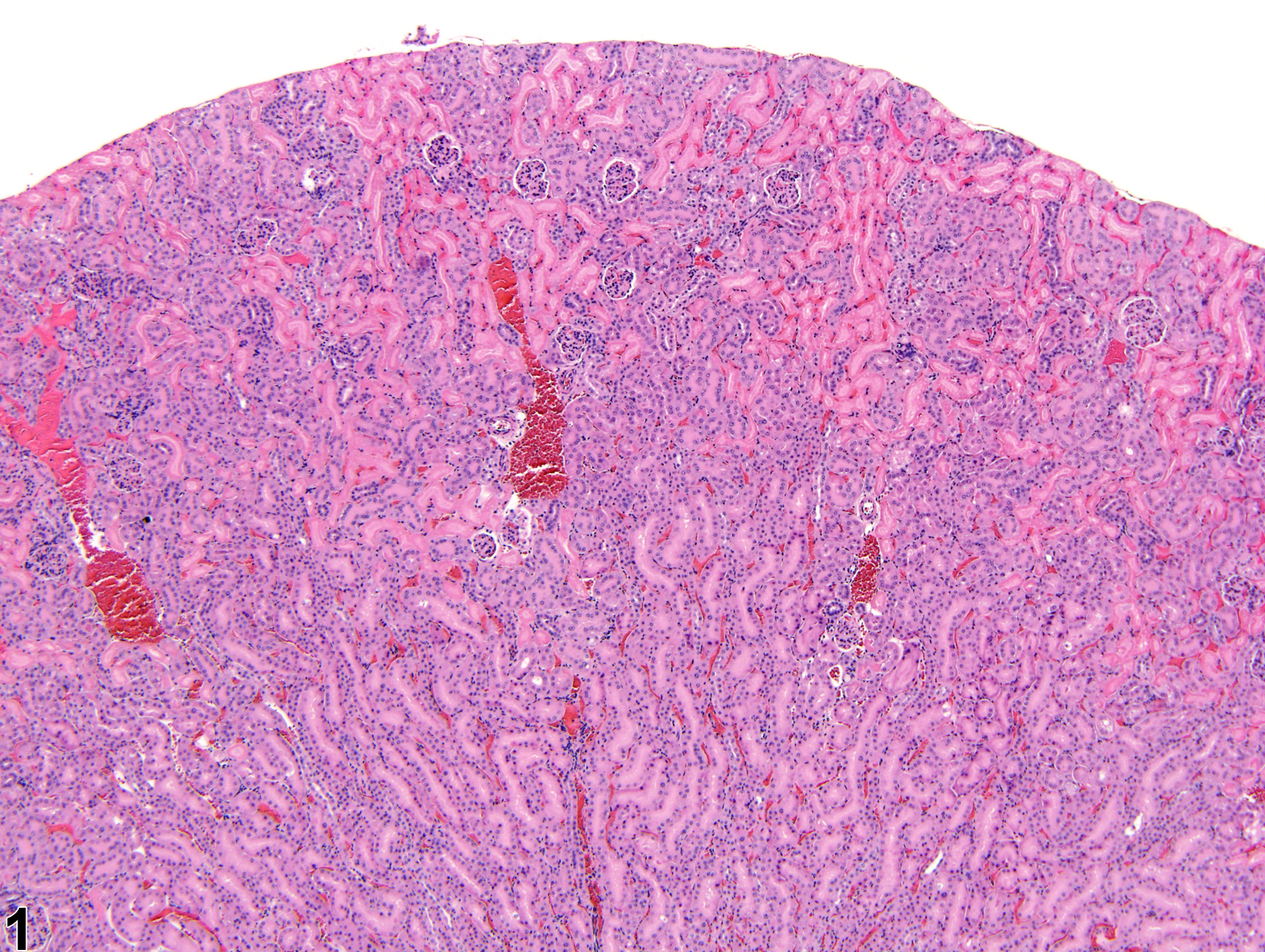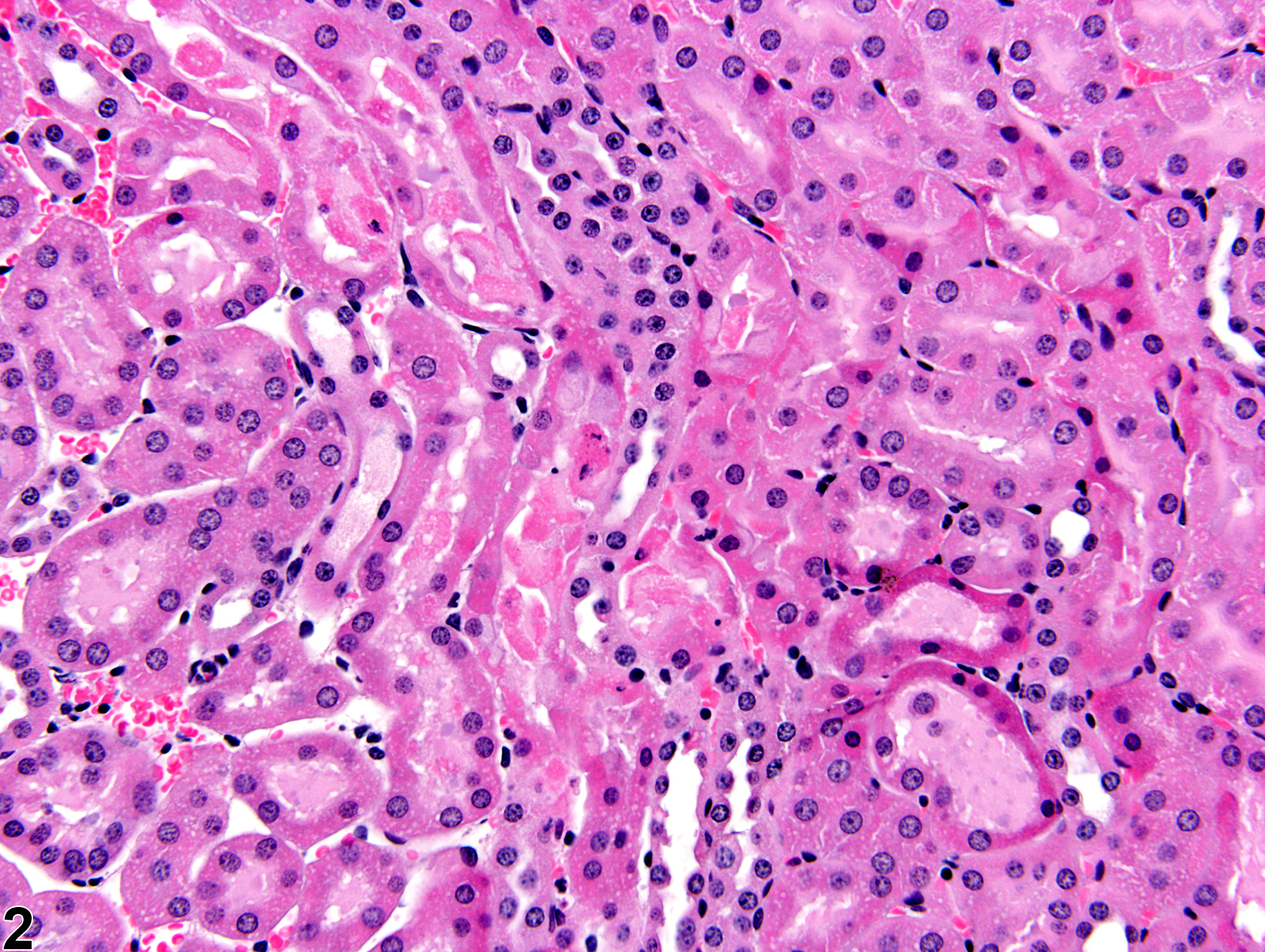Urinary System
Kidney, Renal Tubule - Necrosis
Narrative
Frazier KS, Seely JC, Hard GC, Betton G, Burnett R, Nakatsuji S, Nishikawa A, Durchfeld-Meyer B, Bube A. 2012. Proliferative and non-proliferative lesions in the rat and mouse urinary system. Toxicol Pathol 40:14S-86S.
Abstract: http://www.ncbi.nlm.nih.gov/pubmed/22637735Harriman JF, Schnellmann RG. 2005. Mechanisms of renal cell death. In: Toxicology of the Kidney (Tarloff JB, Lash LH, eds). CRC Press, Boca Raton, FL, 245-297.

Kidney, Renal tubule - Necrosis in a female B6C3F1 mouse from a chronic study. Diffuse tubule necrosis appears as lighter-staining, more eosinophilic tubules.



